Opportunity cost neglect (The psychology of money series)

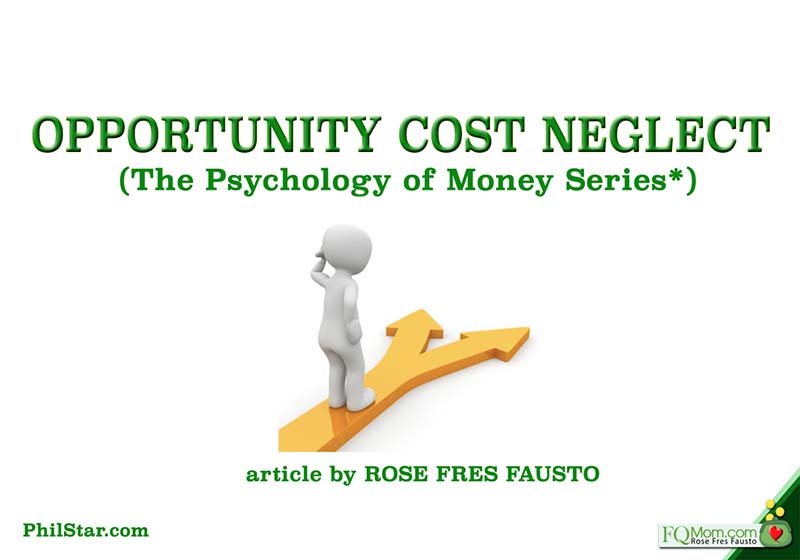
The use of time and money is all about opportunity costs.
Opportunity cost refers to the return or other forms of benefit that we could have received, but gave up, to take another course of action. In Economics lingo, it is the unrealized utility from alternative choices displaced by the choice that we make. In investing, it is the difference between our chosen investment and the one we passed up on. Mathematically, it can be expressed as follows:
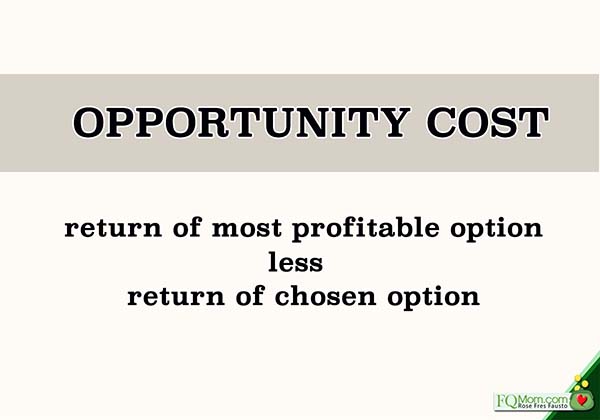
The use of time and money is all about opportunity costs. Each time we purchase something, we are foregoing the purchase of something else using that amount of money. When we spend time doing activity A we pass up on the benefits of the other activities that we could have done using that time.
The Econ (the always rational consumer) will be able to calculate opportunity costs such that the use of valuable resources like time and money will always be optimal. Alas! We are just human, so we usually suffer from opportunity cost neglect.
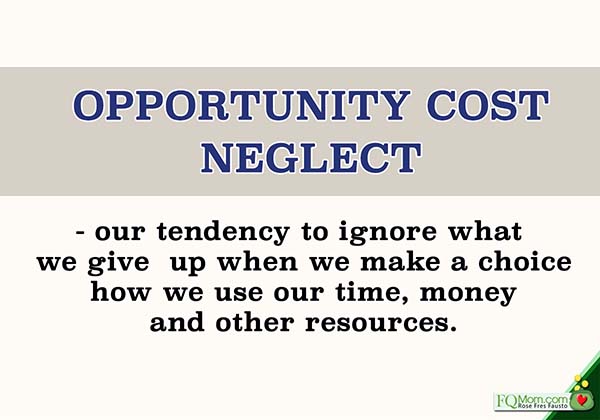
In the 2009 study on this subject matter done by Frederick, Novemsky, Wang, Dhar and Nowlis, they found out that consumers often fail to think about opportunity costs. They just consider what is salient (obvious) at the moment, neglecting relevant information that are not in their face at the time of their decision making. It seems like the human brain is too lazy to retrieve relevant information already known in order to generate alternatives that are not explicit at the moment of decision making.
In one of the experiments discussed in the study, the participants were each given $10.00. They were grouped randomly into two, and asked to use the money to make an actual choice between the following:
Group 1:
Option A: an insulated metallic portable coffee mug for $10.00
Option B: a simpler ceramic mug at $3.99
Group 2:
Option A: an insulated metallic portable coffee mug for $10.00
Option B: a simpler ceramic mug at $3.99 leaving you with an extra $6.01 cash to spend on something else.
Results:
In Group 1, only 40 percent chose the cheaper mug, while in group 2 a significantly larger 60 percent chose the cheaper mug. Although the price difference is the same (and all the participants knew how to subtract), there was a huge disparity in the number of those who opted for the cheaper one, just because of the explicit “leaving you with an extra $6.01 cash to spend on something else.”
Pioneer vs. Sony
Here is a story of an actual experience of one of the authors of the study above showing our inability to systematically do opportunity cost computations, and how we are affected by salient factors presented to us at the time of decision making.
After nearly an hour of contemplating on his purchase of a stereo system, he was frozen which choice to make:
Option A: $700 Sony stereo system with a 30 watt per channel amplifier and a five-disc CD-changer
Option B: $1,000 Pioneer stereo system with a 60 watt per channel amplifier and a six-disc CD changer
Then the salesman intervened, “Well, think of it this way – would you rather have the Pioneer or the Sony plus $300 worth of CDs?”
The decision that seemed so difficult for this academician to make just moments ago was now a no-brainer. A big pile of CDs worth $300 with the Sony stereo system was enough for him to forego the slightly more attractive features of the Pioneer.
The above shows our difficulty in doing opportunity cost computations. And in trying to do so, we tend to focus only on explicitly presented details and fail to spontaneously retrieve other relevant factors in order to generate alternatives not explicitly provided.
Another example: When someone is selling you an investment instrument
I always hear sellers of investment instruments compare the return of their products with the almost zero interest rates from savings accounts. The next time you’re peddled investment products this way, please, don’t readily jump into the conclusion that their products are good for you. Remember opportunity cost neglect so you don’t just focus on the seller’s sales pitch. Compare their returns with other instruments with similar risks and take into account other features such as fees, forfeiture, tenor, etc.
Beware
Given our tendency to only focus on what is salient or in our face at the moment, we should be aware that our spending habits, both money and time, are greatly affected by external factors, by marketers out there who are all after our finite resources.
What I propose we should do to combat this tendency to neglect opportunity cost is to be fully aware of our goals and dreams. Yes, the answer to our inability to systematically compute opportunity costs is not a mathematical app or equation, but a heightened awareness of our goals and dreams. If we are clear on our goals in life, we are able to prioritize the use of our money and time.
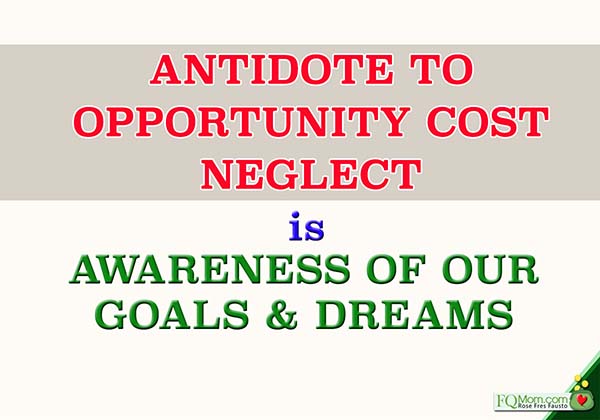
So the next time, you’re tempted to buy that gadget, or go on unscheduled shopping, or spend endless time on your social media and other activities, ask the question, “Will this bring me closer to the fulfillment of my goals and dreams?” If the answer is no, then you just armed yourself to avoid the human tendency for opportunity cost neglect. ![]()
****************************
*The psychology of money series – Feel free to check author rrchive for previous installments on this series (The pain of paying, Mental accounting, What is the price we pay for free?, Anchoring effect, Ego depletion, Loss aversion, Myopic loss aversion, Sunk cost fallacy, etc.)
ANNOUNCEMENTS
1. Watch our FQ-wentuhan tomorrow at 12 noon on FQ Mom Facebook page. We will discuss this topic of opportunity cost neglect.
2. Want to know your FQ Score? Take it today. Click link to take the test: http://tinyurl.com/FQTest
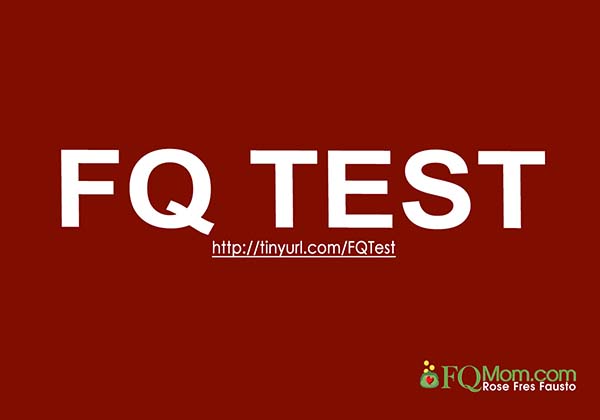
Rose Fres Fausto is a speaker and author of bestselling books “Raising Pinoy Boys” and “The Retelling of The Richest Man in Babylon” (English and Filipino versions). Click this link to read samples – Books of FQ Mom Rose Fres Fausto. She is a behavioral economist, a certified gallup strengths coach and the grand prize winner of the first Sinag Financial Literacy Digital Journalism Awards. Follow her on Facebook and You Tube as FQ Mom, and Twitter & Instagram as theFQMom.


















